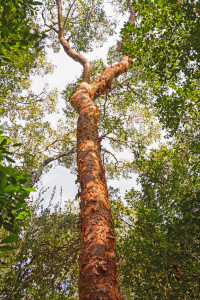 Ever heard of the gumbo-limbo tree? No, it’s not from a fantasy book, it’s a real tree that lives in the Everglades. In fact, it’s one of the best-known trees in south Florida. It’s also known as the “tourist tree,” because its peeling bark resembles the skin of South Florida visitors.
Ever heard of the gumbo-limbo tree? No, it’s not from a fantasy book, it’s a real tree that lives in the Everglades. In fact, it’s one of the best-known trees in south Florida. It’s also known as the “tourist tree,” because its peeling bark resembles the skin of South Florida visitors.
This tree has a shiny, red bark that has the appearance that it’s constantly peeling. It has green leaves that grow in spirals. It produces fruit mainly in March and April. The gumbo limbo tree is tall (grows rapidly), and it’s wood is easy to carve. It is very sturdy and hurricane resistant. But when they do fall, they can sprout from a broken branch on the ground; clearly, they are a very resilient plant! This tree is also considered a shade tree that thrives with minimal care.
The resin from the tree has medicinal purposes and can treat gout. Tea that is made from the tree’s leave is known to have anti-inflammatory properties.
In the Everglades National Park, there is a Gumbo Limbo Trail that is .4 miles round trip. Bicycles are not allowed on this path. This paved path brings visitors through a shaded, hammock of gumbo limbo trees, along with royal palms, ferns, and air plants. The trail is about 4 miles from the main park entrance. This is considered an easy path. Along this trail, there are signs identifying the trees and explaining how this forest formed. There are some deep holes surrounding the path and it is known to be a bit buggy.
Check Out the Gumbo-Limbo Trees
While you can check out these unique-looking trees on the Gumbo-Limbo Trail, you can also view these trees and even more vegetation on an airboat tour through the Park. Join Captain Mitch’s Airboat Tours for a fun and exciting airboat adventure today. To book an airboat tour in the Everglades, click here or call 800-368-0065.
 At the end of last year, a study was released revealing that the bottlenose dolphins in the Everglades show signs of mercury poisoning. Florida International University (FIU) scientists have been examining the dolphins, and released the study that stated the dolphins have a high mercury concentration on both their skin and blubber. These dolphins that were examined live around the Everglades National Park, the lower Florida Keys, and Florida Bay. These dolphins have a high mercury concentration them than any other dolphin population in the world. In fact, the level of mercury these scientists found was the highest level ever recorded.
At the end of last year, a study was released revealing that the bottlenose dolphins in the Everglades show signs of mercury poisoning. Florida International University (FIU) scientists have been examining the dolphins, and released the study that stated the dolphins have a high mercury concentration on both their skin and blubber. These dolphins that were examined live around the Everglades National Park, the lower Florida Keys, and Florida Bay. These dolphins have a high mercury concentration them than any other dolphin population in the world. In fact, the level of mercury these scientists found was the highest level ever recorded.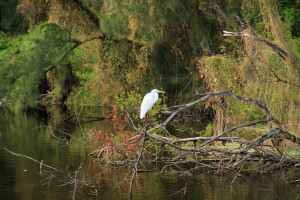 It’s officially the dry season in the Everglades and Florida, which is the best time to head down to the area to view an array of different wildlife species. During this time of year, the good weather combined with low water levels creates the perfect conditions and environment for animals and birds to congregate near bodies of water.
It’s officially the dry season in the Everglades and Florida, which is the best time to head down to the area to view an array of different wildlife species. During this time of year, the good weather combined with low water levels creates the perfect conditions and environment for animals and birds to congregate near bodies of water.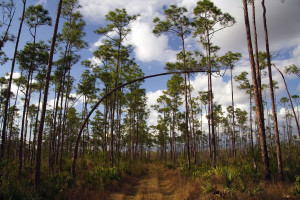 also called the Pinelands, are a disappearing habitat in the Everglades and all South Florida. These rocklands are found on limestone substrates. These Pinelands once covered around 185,000 acres in Miami-Dade County, and by 1996 only 2 percent of this forest remained in the urbanized areas of the county and outside the border of the Everglades National Park. The Florida Fish and Wildlife Conservation Commission (FWC) has recently proposed a list of four more plants in the Florida pine rockland ecosystem to receive federal protection. Three at risk species include: The Everglades bully, the Florida pineland crabgrass, and the pineland sandmat; one species is being considered as endangered: the Florida prairie-clover.
also called the Pinelands, are a disappearing habitat in the Everglades and all South Florida. These rocklands are found on limestone substrates. These Pinelands once covered around 185,000 acres in Miami-Dade County, and by 1996 only 2 percent of this forest remained in the urbanized areas of the county and outside the border of the Everglades National Park. The Florida Fish and Wildlife Conservation Commission (FWC) has recently proposed a list of four more plants in the Florida pine rockland ecosystem to receive federal protection. Three at risk species include: The Everglades bully, the Florida pineland crabgrass, and the pineland sandmat; one species is being considered as endangered: the Florida prairie-clover.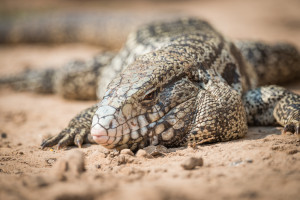 Burmese pythons are well-known to be a major problem in the Everglades; however, there are other invasive species in this vast wetland that are a problem to the local ecosystem. One such species is the tegu lizard, which originated in South America. In fact, they are on the state’s list of most aggressive invasive species. So, how did the tegu lizards end up in the Everglades in Florida? They either escaped or were released from people who owned them as pets.
Burmese pythons are well-known to be a major problem in the Everglades; however, there are other invasive species in this vast wetland that are a problem to the local ecosystem. One such species is the tegu lizard, which originated in South America. In fact, they are on the state’s list of most aggressive invasive species. So, how did the tegu lizards end up in the Everglades in Florida? They either escaped or were released from people who owned them as pets.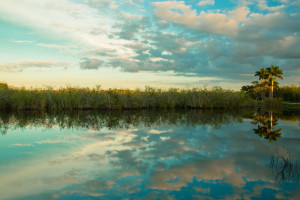 Lately, it seems like most news to come out about the Everglades isn’t too positive. Thankfully however, there was some good news to come out last month. Water quality is being restored in the Everglades. Over the past two decades, the Florida Department of Environmental Protection and the South Florida Water Management District (SFWMD) have had the goal of restoring water quality. Recent tests have shown that at least 90 percent of the Everglades now meets an “ultra clean” water quality when it comes to levels of phosphorus (10 parts per billion or less required by federal consent decree and under state law). Right now, 100 percent of the Everglades is below 8 parts per billion; 86 percent of the Everglades is at 8 parts per billion.
Lately, it seems like most news to come out about the Everglades isn’t too positive. Thankfully however, there was some good news to come out last month. Water quality is being restored in the Everglades. Over the past two decades, the Florida Department of Environmental Protection and the South Florida Water Management District (SFWMD) have had the goal of restoring water quality. Recent tests have shown that at least 90 percent of the Everglades now meets an “ultra clean” water quality when it comes to levels of phosphorus (10 parts per billion or less required by federal consent decree and under state law). Right now, 100 percent of the Everglades is below 8 parts per billion; 86 percent of the Everglades is at 8 parts per billion.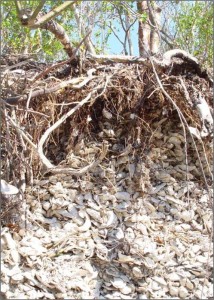 The Everglades is home to many unique and special plant and animal life. Tree islands are a big part of the Everglades’ landscape and ecosystem; in fact, they’re hundreds of them. You’ve probably seen them time and time again in photos of the wetland but not realized what they are. So, what is a tree island? A tree island is a naturally formed patch/clump of trees in the march that can resemble an island of trees.
The Everglades is home to many unique and special plant and animal life. Tree islands are a big part of the Everglades’ landscape and ecosystem; in fact, they’re hundreds of them. You’ve probably seen them time and time again in photos of the wetland but not realized what they are. So, what is a tree island? A tree island is a naturally formed patch/clump of trees in the march that can resemble an island of trees.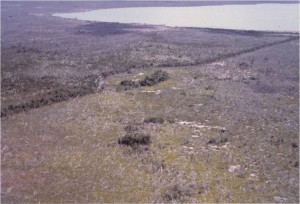 The native people who lived in the Everglades left plenty of evidence behind of their existence. This evidence truly showed the people knew how to manipulate the land and areas around them to ensure their survival as a people. Besides tools, mounds, and tree islands, the native created systems of canals. These canals show the engineering and organization skills these people practiced.
The native people who lived in the Everglades left plenty of evidence behind of their existence. This evidence truly showed the people knew how to manipulate the land and areas around them to ensure their survival as a people. Besides tools, mounds, and tree islands, the native created systems of canals. These canals show the engineering and organization skills these people practiced.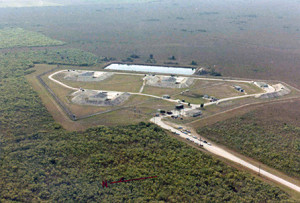 Not only is the Everglades a beautiful landscape to explore, you also can get a history lesson while in the Park. In the park, the Nike Hercules Missile site stands, and it happens to be a relic of The Cold War. Visitors are able to visit the Nike Missile Base by a ranger-guided walk that is offered in the months of December through April. The site is home to 22 buildings and structures.
Not only is the Everglades a beautiful landscape to explore, you also can get a history lesson while in the Park. In the park, the Nike Hercules Missile site stands, and it happens to be a relic of The Cold War. Visitors are able to visit the Nike Missile Base by a ranger-guided walk that is offered in the months of December through April. The site is home to 22 buildings and structures.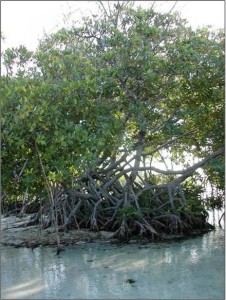 Seeing as it’s been around for years and years, it’s no surprise the Everglades has quite a bit of archaeological heritage within it. Native people have lived in the Everglades long before European settlers came to Florida and began settlements. Below, we’ll share some information with you on shell works, which is one of the archaeological heritage sightings you can find throughout the Park that give visitors insight into the Everglades’ past.
Seeing as it’s been around for years and years, it’s no surprise the Everglades has quite a bit of archaeological heritage within it. Native people have lived in the Everglades long before European settlers came to Florida and began settlements. Below, we’ll share some information with you on shell works, which is one of the archaeological heritage sightings you can find throughout the Park that give visitors insight into the Everglades’ past.





